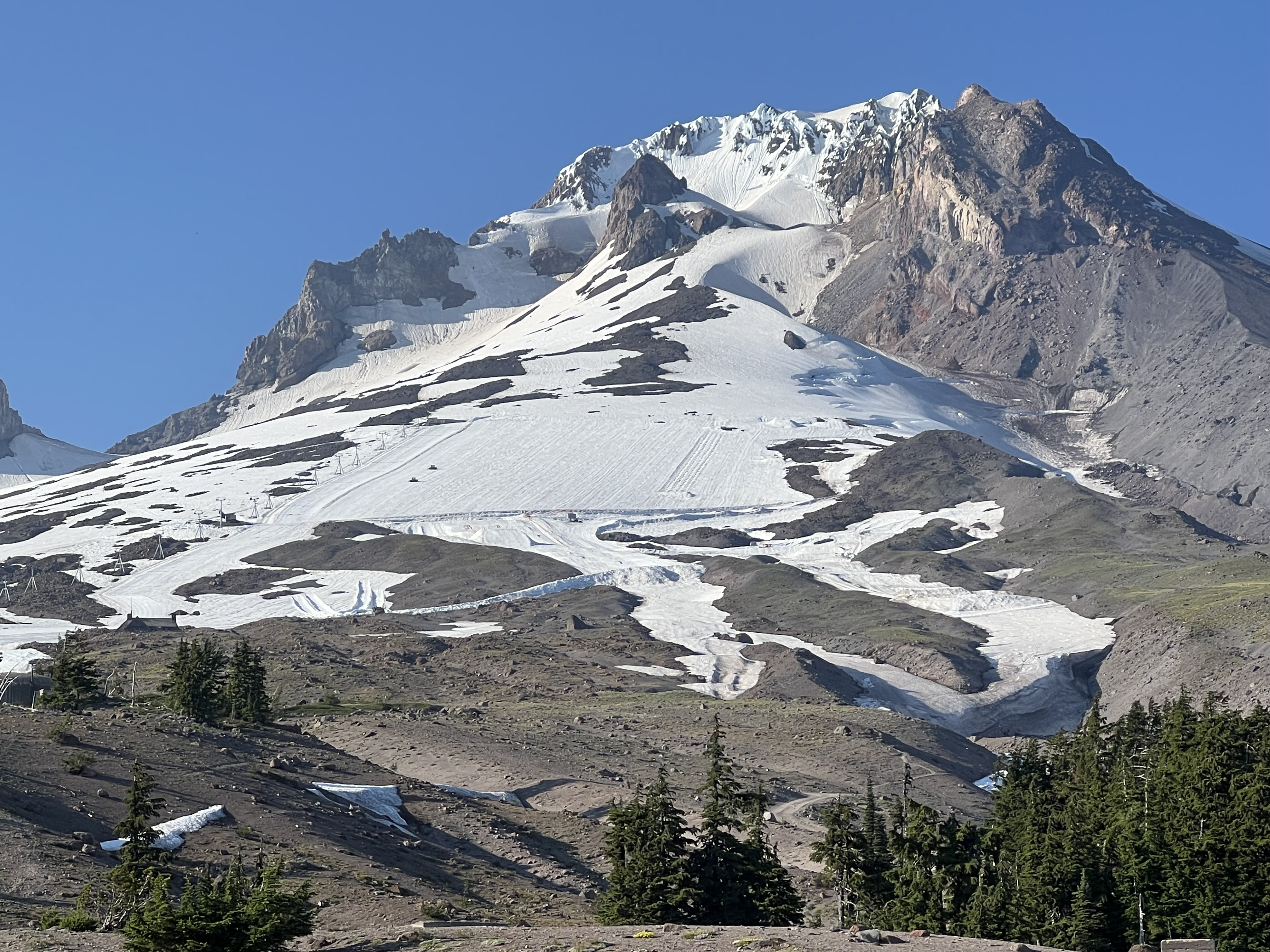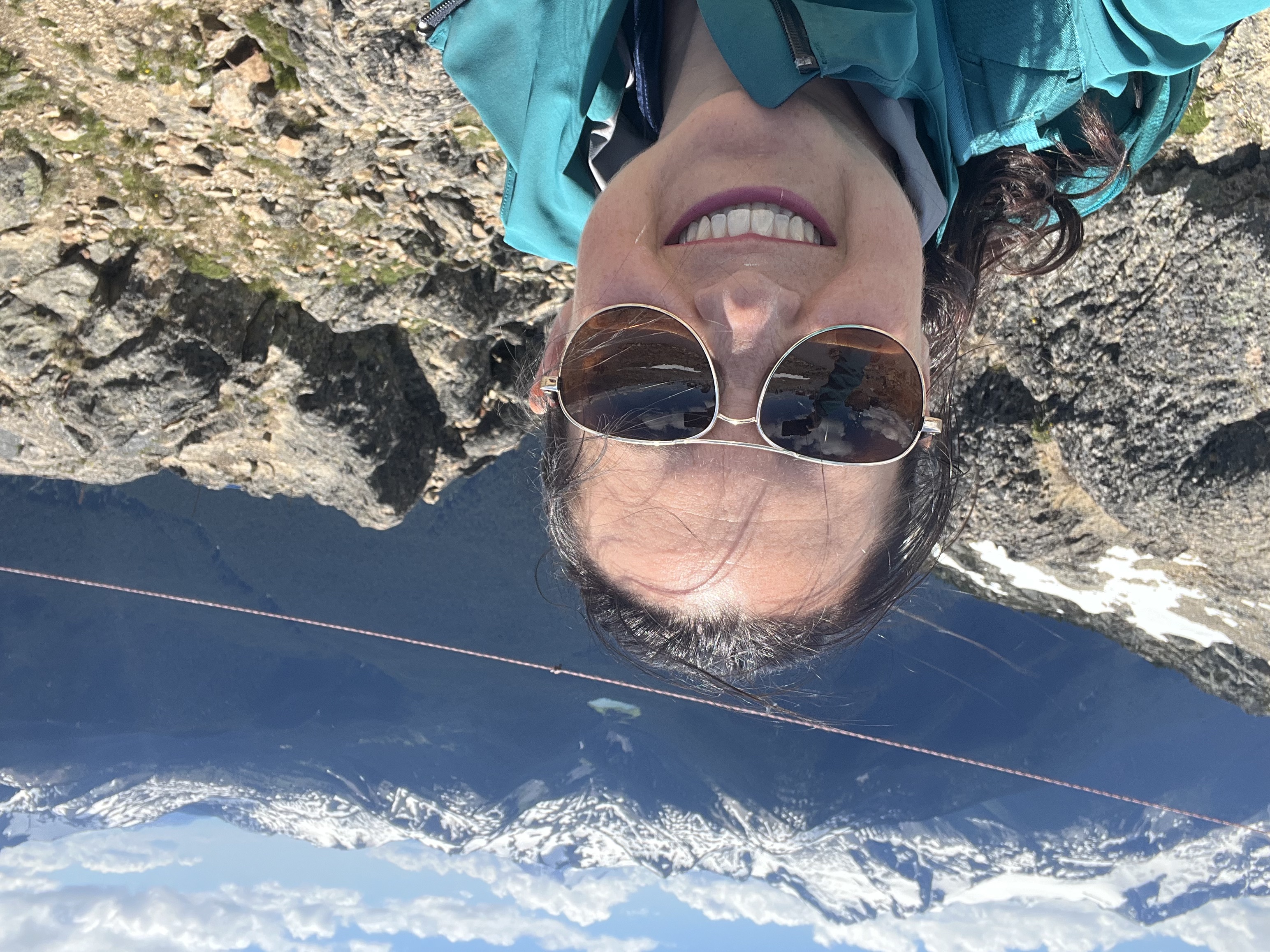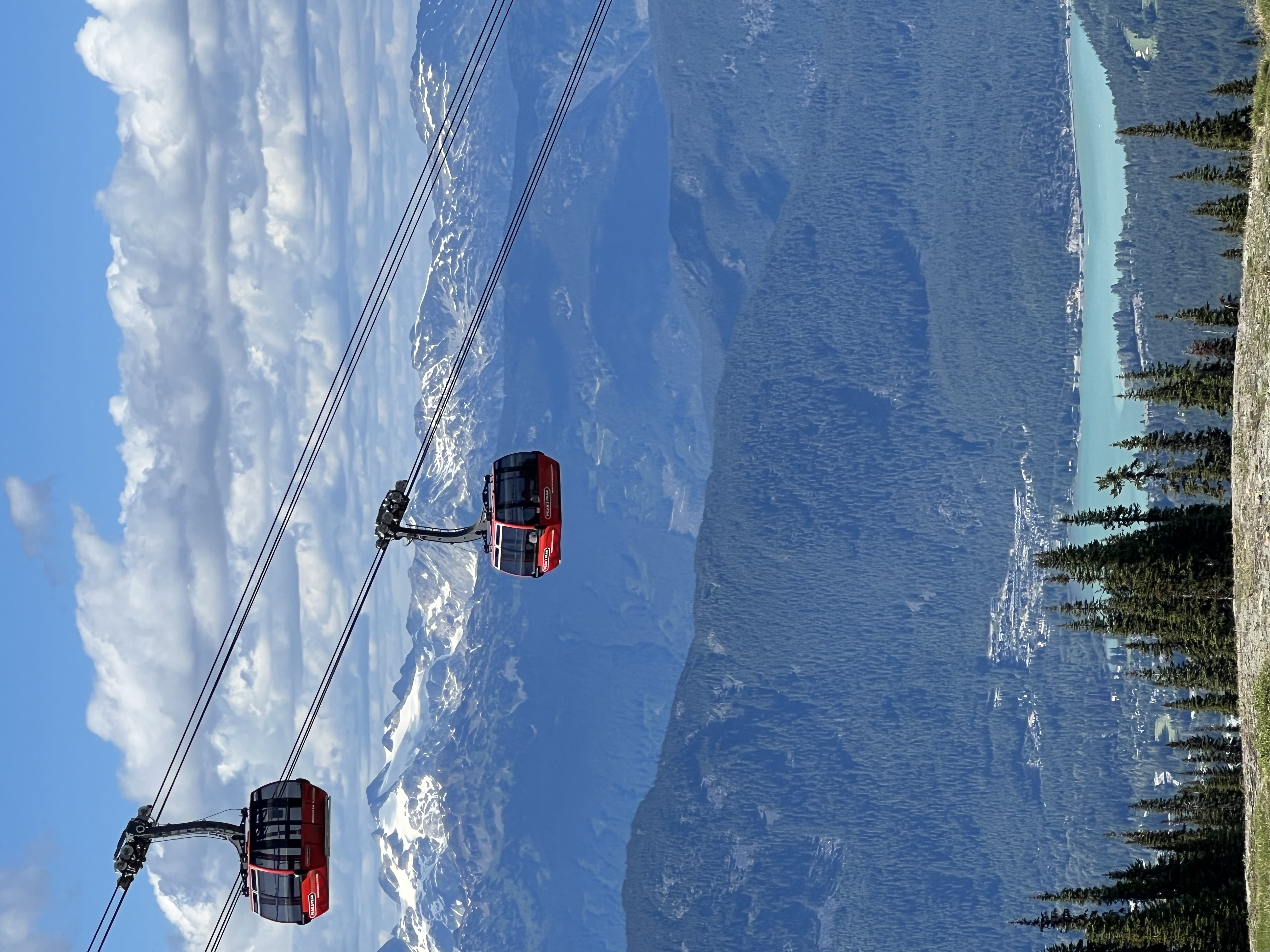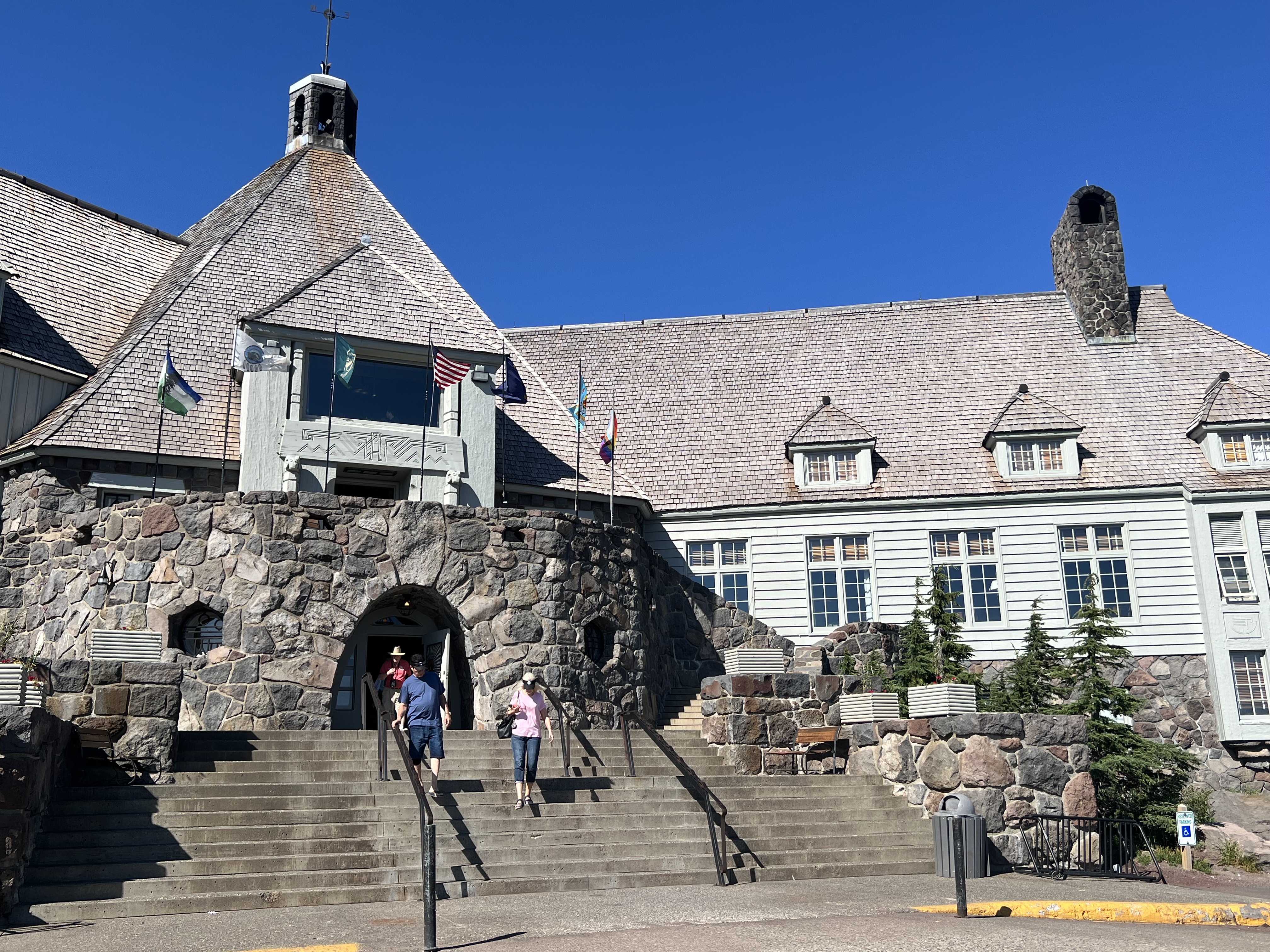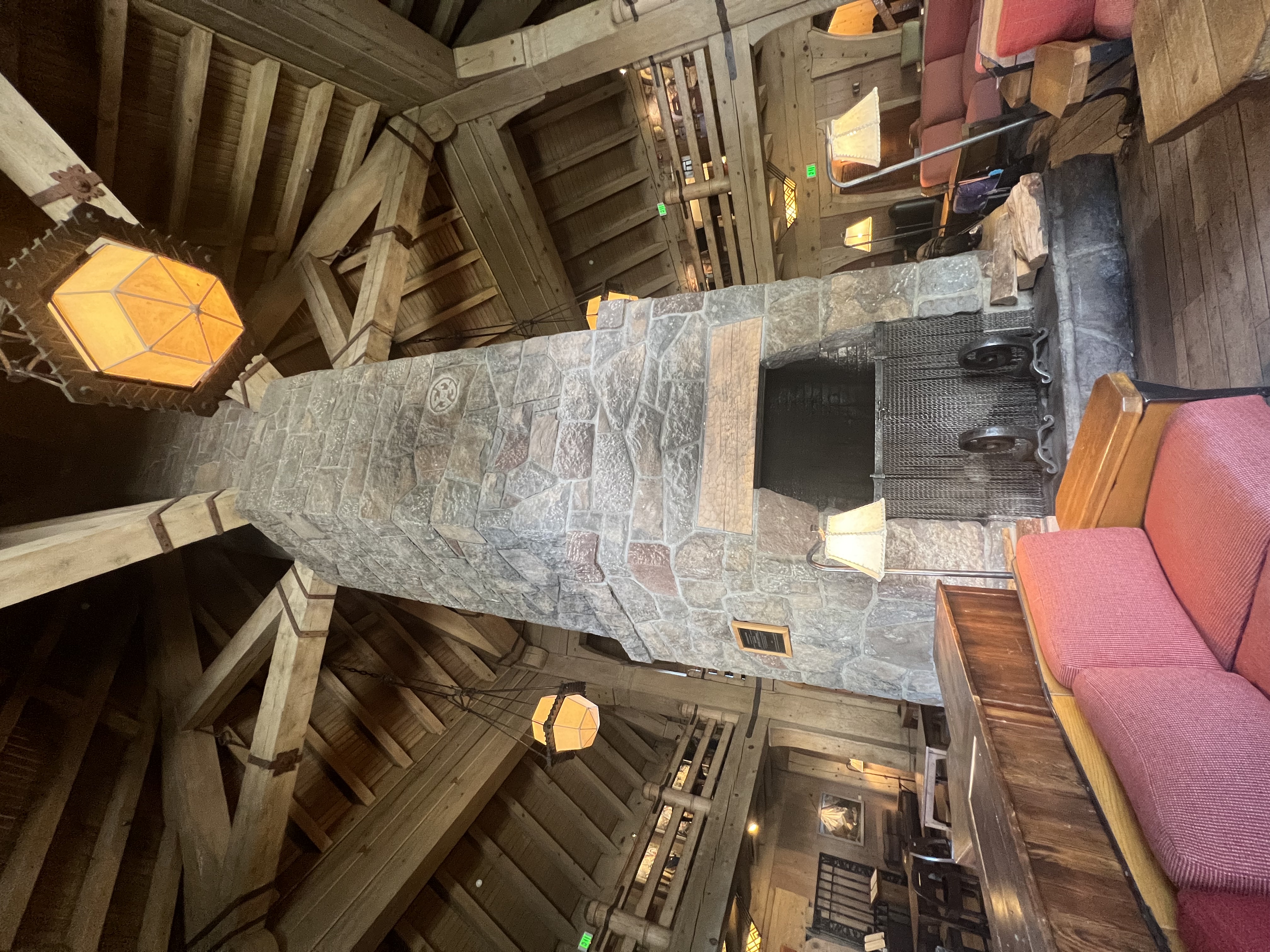I have skied every month of the year from November to June, but I had never skied in July until last summer.
I try to embrace each season fully and enjoy the change of weather and activities. But in sports and in life sometimes we need to step over the line of normal and predictable to expand our experience and sense of possibility.
So why not go snow skiing in the North American summer?
As a native of the Pacific Northwest, I knew that Mt. Hood Timberline was a go-to place for summer ski training—from kids ski camps to Olympic athletes perfecting their technique. But I tend to head for the lake instead of the glacier during the summer months.
So, on a whim of curiosity, my friend and I booked a weekend at the historic Timberline Lodge to check out the ski scene in July. And it turned into so much more.
A few years ago, on a particularly spectacular snow year, I hauled my skis in the 90-degree heat to my local airport and headed to Reno, NV to ski Squaw Valley (now Tahoe Palisades) in the month of June.
It’s hard to beat snow skiing in the morning and heading down to play on Lake Tahoe in the afternoon.
You can also ski down to the upper tram station where there is a summer outdoor pool and café. It is pretty hilarious to see fellow skiers tromping around the pool deck in their heavy ski boots and swimsuits.
Now I was excited to experience skiing in July. And to drive Guilia on a ski trip.
The July weekend we picked turned out to be the hottest weekend of the summer. In the valleys below Mt Hood, the temperatures soared to over 110 degrees Fahrenheit. The historic Timberline Lodge most definitely does not have air conditioning.
The evening of arrival, I sat on the outdoor patio looked up at the majestic peak and watched the groomers working the glacier snowfield above—and I tried to imagine the lines and conditions I would experience skiing the next day.
Skiing in July
The next morning at 6 a.m., I was surprised to lean out of my dormered room window and see lines of skis outside the day lodge and a steady stream of young skiers trudging with their heavy gear bags to the lift line.
You’d have thought this was a powder day in January!
The chairlift up to the glacier started spinning at 7 a.m. and it was already 70 degrees as we walked to the lift. It’s an intense summer sun at high elevation but there were cool breezes blowing off the glacier above that felt refreshing.
As we ascended up the chair, I quickly realized that most of the snowfield was covered with various ski race training runs. Flags from the many countries represented waved in the mountain breeze. It actually felt a bit crowded.
We talked to a trio of young tweens at the lift who were visiting and training from South Korea. These young skiers took their training seriously. As an expert skier myself, I actually started to feel a tad intimidated as I approached the top.
I opted not to go for the Instagram photo of skiing in a bikini. The thought of a potential crash on that sharp slushy snow and craggly adjacent lava rock—along with memories of past sunburns—convinced me to keep my skin and head covered. (Yes, I am now middle-aged and ever so slightly practical.)
The skiing turned out to be smooth, fast, and fun. My leg muscles burned after a couple of months off the slopes. Motivation to keep up training year-round.
I was most enamored with skiing past exposed patches of lava rocks and seeing wildflowers growing and blooming up through the rocks. That is not a scene one gets to see during winter.
An international crossroads
Timberline Lodge hosts over 2 million visitors a year and in July it is abuzz with sight-seeing visitors and ski training camps, but also PCT thru-hikers. The Pacific Crest Trail is a National Scenic Trail running 2650 miles from Mexico to Canada following the crest of the Sierra Nevada and Cascade mountains of California, Oregon, and Washington and its path crosses over Mt. Hood and right past Timberline Lodge.
Thru-hikers try to complete the entire trail in a single year, generally hiking south to north. Timberline Lodge is an important waypoint for thru-hikers to resupply and take a break. They send themselves resupply boxes ahead of time which they can pick up in the day lodge. There is also a hikers box where unwanted or extra items can be deposited and needed items acquired all for free.
I was fascinated watching the hikers as they rested and reset in the lodge. They would greet fellow hikers and swap stories and share supplies. Sometimes non-hiking family members would be there to visit them bringing hugs and treats.
I listened with interest as one hiker described her elation at enjoying fresh carrots and hummus the night before and deliberated about how much oatmeal and protein she would need for the next leg of their hike. I watched one young man devour an entire pint of ice cream with joy, a cool relief after the summer heat on the dusty trail.
Historical Lodge
A bit of wandering around the property will reveal an incredible history.
Timberline Lodge is an icon of the Works Progress Administration and was built during the great depression. Completed and opened to the public in 1938, it was designed by Gilbert Stanley Underwood in the style of the rustic lodges in other national parks. It is built with regional materials and has unique repeated elements including a curved post and lintel arch known as the Timberline Arch and hexagonal shapes and arrangements in the rustic wood furnishings.
The Federal Art Project also sponsored furnishings and the lodge is filled with murals, paintings, and carvings as well as wood furnishings and impressive wrought iron ornaments and screens, making every direction you look a point of interest.
Expanding into possibility
In the afternoon after skiing, it was dreadfully warm, and we found a comfy sofa in the second-floor balcony bar conveniently aligned with a large fan. I sipped an icy drink, read bits of my book and mostly watched the continual shuffle of guests, visitors, skiers, and hikers through the bar with many languages being spoken.
I reflected on my day at Timberline. Perhaps I had witnessed a future generation of Olympic champions, their dedication and tenacity evident. I definitely felt inspired by the grit and determination of the PCT thru-hikers. And I thought about some of the visitors who had likely never seen a large volcanic peak or even snow previously in their life. Everyone was pushing the limits of their experienced world and expanding their idea of possibility.
Ironically, two days after I got home—two and a half years after the onset of the pandemic through which I continued to provide dental care to my community—I got Covid.
I laugh when people ask me how I got Covid. “Skiing a glacier in July.”

